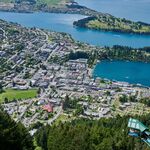On a different note, I have one serious reservation about HSR from an ecological perspective. Assuming that there was a need to hard separate the rail corridor (fences) from adjacent lands, it would form a very significant barrier to wildlife.
Moose and Bears are currently found in the eastern reaches of the former ROW and on both sides of it. I wonder if thought has been given to this.
Secondarily, assuming the Trans-Canada Trail were retained in parallel on the applicable route sections, again, fencing could be quite isolating and inconvenient.
IF the choice were made not to fence in the more remote areas, there would presumably need to be risk analysis for moose collision. Not a risk factor for HSR in most parts of the world!





